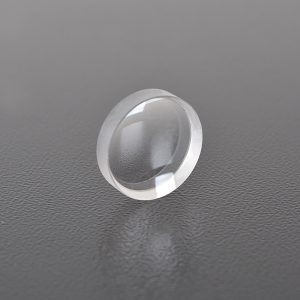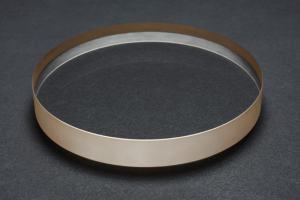
Projection Lens Factory: a Panoramic Analysis of Technology and Application
From nano-level precision processing to vacuum coating technology, projection lenses use innovative game between optical glass and resin to reshape visual boundaries in education, medical care, entertainment and other fields. In the future, 4K/8K ultra-high definition and intelligent wave will drive a lighter and sharper imaging revolution.
Against the background of rapid development of modern science and technology, projection technology has been widely used in education, entertainment, business, medical care and other fields. As one of the core components of projection equipment, the quality and performance of projection lenses directly determine the clarity, brightness and color reproduction of the projection effect. This article will explore in depth the production process, technical difficulties and applications of projection lens factories in various industries.
1. Production process of projection lens factory
1. Design and R&D
The design of projection lens is the first step in production, and is usually designed by optical engineers according to customer needs or market trends. The design process needs to consider multiple optical parameters such as focal length, aperture, distortion correction, and chromatic aberration control of the lens. The design of modern projection lenses often relies on computer-aided design (CAD) and optical simulation software to ensure that the optical performance of the lens is optimal.
2. Material selection
The material selection of the lens is crucial, and commonly used materials include optical glass, resin, quartz, etc. Different materials have different refractive index, light transmittance and heat resistance, so it is necessary to select the appropriate material according to the specific application scenario. For example, high-brightness projection equipment usually requires high-temperature resistant optical glass, while portable projection equipment may use lightweight resin materials.
3. Precision machining
The machining of the lens is a highly precise process, usually including cutting, grinding, polishing and other steps. Modern projection lens factories usually use CNC machine tools (CNC) and automated polishing equipment to ensure that the surface accuracy of the lens reaches the nanometer level. During the machining process, the lens also needs to be tested multiple times to ensure that its optical performance meets the design requirements.
4. Coating treatment
In order to improve the transmittance of the lens and reduce the reflection loss, the projection lens usually needs to be coated. Common coating materials include magnesium fluoride, silicon dioxide, etc. The coating process needs to be carried out in a vacuum environment to ensure the uniformity and adhesion of the film layer. The coated lens can not only improve the transmittance of light, but also enhance its wear resistance and anti-fouling.
5. Assembly and testing
After the lens is processed, it needs to be assembled with other optical components (such as reflectors, prisms, etc.) to form a complete optical system. During the assembly process, it is necessary to ensure that the optical axes of each component are aligned to avoid optical path deviation. After assembly, the lens also needs to be tested for optical performance, including resolution test, distortion test, chromatic aberration test, etc., to ensure that it meets the factory standards.
2. Technical difficulties of projection lens factories
1. High-precision processing
The processing accuracy of projection lenses directly affects the projection effect, especially high-resolution projection equipment, which requires extremely high surface accuracy of lenses. How to improve production efficiency while ensuring processing accuracy is one of the main technical challenges faced by projection lens factories.
2. Material selection and processing
Lenses of different materials will face different technical difficulties during processing. For example, optical glass is prone to stress at high temperatures, causing lens deformation; while resin materials may produce bubbles or scratches during processing. Therefore, how to select suitable materials and optimize the processing technology is a key issue that projection lens factories need to solve.
3. Coating process
The coating process not only affects the optical performance of the lens, but is also directly related to its service life. How to improve the coating efficiency while ensuring the uniformity of the film layer is a technical problem that projection lens factories need to overcome.
3. Application of projection lenses in various industries
1. Education
In the field of education, projection equipment is widely used in classroom teaching, distance education and other scenarios. High-quality projection lenses can provide clear and bright images to help students better understand the teaching content.
2. Entertainment
In entertainment venues such as home theaters and cinemas, projection equipment is the key to providing an immersive viewing experience. High-resolution, low-distortion projection lenses can restore true colors and details and enhance the audience’s viewing experience.
3. Business
In commercial displays, conference presentations and other scenarios, projection equipment is an important tool for information transmission. High-performance projection lenses can ensure the clarity and brightness of the projected content and improve the display effect.
4. Medical
In the medical field, projection technology is used in surgical navigation, medical imaging display and other scenarios. High-precision projection lenses can provide clear images to help doctors make accurate diagnoses and surgical operations.
4. Future development trends
With the continuous advancement of projection technology, projection lens factories are also facing new development opportunities and challenges. In the future, the development trend of projection lenses may include:
1. Higher resolution
With the popularity of 4K and 8K ultra-high-definition projection equipment, the resolution requirements of projection lenses will be further improved. Projection lens factories need to continuously optimize design and processing technology to meet the market demand for high-resolution projection equipment.
2. Lighter
The market demand for portable projection equipment continues to grow, and projection lens factories need to develop lighter materials and production processes to reduce the weight and volume of projection equipment.
3. Intelligent
With the development of artificial intelligence technology, future projection equipment may have functions such as autofocus and auto correction. Projection lens factories need to combine with intelligent technology to develop more intelligent lens products.
Conclusion
As the core component of projection equipment, the quality and performance of projection lenses directly affect the projection effect. Through continuous technological innovation and process optimization, projection lens factories provide high-quality projection solutions for all walks of life. In the future, with the further development of projection technology, projection lens factories will continue to play an important role in the field of optics and promote the widespread application of projection technology.
Hanzhong Brisun Optics Co., Ltd. Is the high precision optical element manufacturer provides customized production of Various optical lenses, including spherical lens, cylindrical lens, optical window, mirror, prism, filter, metal base mirror and other high-precision optical elements. The base materials include various optical glass, fused quartz, calcium fluoride (CaF2), zinc selenide (ZnSe), germanium (GE), silicon (SI), sapphire, metal and other materials. And provide antireflective film, high reflection film, spectroscopic film, metal film and other optical coatings.
Welcome to OEM and Purchasing!


